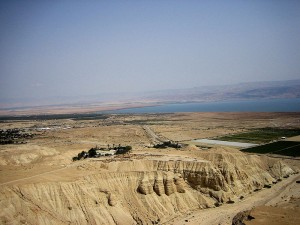Purity as Separation: Introduction
 Comparing the Dead Sea Scrolls, Rabbinic Literature, and the New Testament
Comparing the Dead Sea Scrolls, Rabbinic Literature, and the New Testament
The purpose of this paper, to put it very directly, is to demonstrate that simplistic assumptions regarding the connection of the Dead Sea Scrolls and the sect that collected them to early Christianity have been vastly oversimplified. Specifically, we seek to illustrate this notion by investigating the approaches of the Qumran documents and the New Testament to ritual purity, along the way making comparisons to rabbinic literature. Many scholars have sought to see this particular aspect as a close parallel between the early Christians and the Essenes–assumed to be the Qumran sectarians–and these, in turn, have often been tied to John the Baptist and his use of ablutions to actualize repentance and spiritual rebirth. The fundamental comparison made here has been between John’s baptismal rites and the role of immersion in a ritual bath (miqveh) in Qumran and Essene initiation processes. We will argue that fuller consideration of the place of purity and impurity in the life of the Qumran sect (designated by the roots tm’ and thr) and in the early Christian community (καθαρός and ’ακαθαρτός) argues strongly against such parallels and that, in fact, these two communities, and perhaps their earliest leadership, took strongly divergent paths in regard to this important aspect of ancient Jewish religious life.
In what follows, we will begin by surveying the role of purity laws in the admission process to the Qumran sect, including a brief comparison of the role of such laws in Josephus’s description of the Essenes and rabbinic descriptions of the havurah, the association of Jews observing strict purity laws outside of Temple context described in tannaitic literature and often associated in modern scholarship with the Pharisees. We will then investigate Gospel passages and some other New Testament texts to understand how the early Christians understood the role of ritual purity and impurity in the life of their community. We will see that the early Church fundamentally rejected the extension of ritual purity from the realm of the Temple to that of the home and community, a trend also operative in rabbinic literature where it competed with forces seeking extension of purity, which it eventually conquered. We will expand our understanding of the New Testament attitude to ritual purity and impurity by surveying passages that indicate the more inclusive approach of the early Christians that can easily be contrasted with that of the Qumran sect and the Essenes as described in Philo and Josephus. Based on this comparison, we will conclude that the Qumran sect and the earliest Christians took greatly divergent paths in their attitudes to ritual purity and impurity.

Leave a Reply